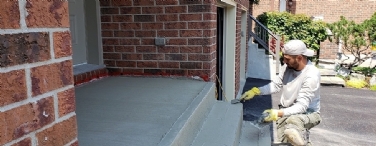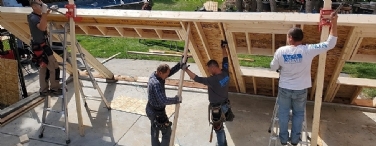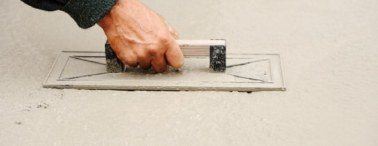
Cracks in the basement may arise from various factors, such as foundation settling, soil shifts, water pressure, or structural concerns. Below are several common causes of cracks and possible solutions.
Settling:
Uneven settling occurs when different sections of the foundation sink or shift at different rates. This can happen for various reasons, such as soil composition, moisture levels, or inadequate construction practices. When uneven settling occurs, it can lead to cracks in the basement walls or floors and other structural issues throughout the building.
Solutions For Uneven Settling:
Professional assessment of uneven settling typically involves A comprehensive examination conducted by either a structural engineer or foundation specialist. You can find top-rated structural engineers and foundation contractors at trustedpros.ca. They will examine the extent of the settling, identify the underlying causes, and recommend appropriate repairs. In some cases, minor settling may not require immediate action. Still, significant or progressive settling can pose severe potential threats to the structural stability of the building and should be addressed promptly.
Underpinning:
This involves strengthening or stabilizing the foundation by extending its support to deeper, more stable soil layers or by adding additional support structures. This can be done using various methods such as installing helical piers, push piers, or micro piles underneath the foundation to shift the load of the building to more stable ground.
Foundation stabilization techniques:
This may involve injecting structural resins or grout into the soil beneath the foundation to fill voids, compact loose soil, or provide additional support. Additionally, techniques such as slabjacking or mud jacking can be used to raise and level sections of the foundation that have settled unevenly.
Water Pressure:
Hydrostatic pressure occurs when water accumulates around the foundation of a building, exerting force against the walls and floor of the basement. This pressure can result from various sources, including heavy rainfall, poor drainage, or high groundwater levels. If not properly managed, hydrostatic pressure can lead to cracks in the basement walls and floor, as well as water infiltration and structural damage.
Solutions to Avoid Water Pressure:
French Drain or Weeping Tile System:
A French drain consists of a pipe with perforations surrounded by gravel or aggregate, which is placed along the outer boundary of the foundation. This system collects groundwater and surface water and directs it away from the foundation, preventing it from accumulating and causing pressure.
Exterior Waterproofing:
This may involve applying a waterproof membrane or applying a coating onto the outer surface of the foundation walls, along with installing drainage panels or dimpled membranes to help channel water away from the foundation.
Interior Drainage Systems:
In cases where hydrostatic pressure is particularly severe or persistent, additional measures may be necessary to mitigate the risk of damage. This could include installing interior drainage systems such as a sump pump, designed to gather water infiltrating the basement and expel it to prevent flooding.
By properly managing hydrostatic pressure through the installation of drainage systems and waterproofing measures, homeowners can help protect their basements from cracks and water damage, preserving the integrity of the foundation and the overall structural stability of the building.
Poor Soil Compaction:
Improper soil compaction during construction is a common issue that can lead to settling and cracking of the foundation over time. Soil compaction is essential to ensure that the soil beneath the foundation is stable and able to bear the weight of the structure situated above. If soil isn't compacted adequately, it may become loose, irregular, or susceptible to movement, leading to uneven settling of the foundation and subsequent formation of cracks.
Why does this happen?
Poor Soil Preparation:
Insufficient preparation of the soil before construction, such as inadequate grading or removal of organic material, can lead to uneven compaction and settlement issues later on.
Inadequate Compaction Equipment:
The type and quality of compaction equipment used during construction can affect the effectiveness of soil compaction. Improperly calibrated or inadequate equipment may not achieve the necessary level of compaction.
Moisture Content:
The moisture level within the soil significantly influences its compaction. Soil that is too wet or too dry may not compact properly. Failure to control moisture levels during construction can result in poorly compacted soil.
Construction Practices:
Construction activities, such as heavy machinery operation or excessive traffic on the site, can disturb the soil and compromise its compaction.
How to tackle such issues?
Soil stabilization:
Soil stabilization methods are geared towards enhancing the engineering characteristics of the soil to boost its ability to bear loads and diminish settling. This can entail incorporating stabilizing substances like lime, cement, or fly ash into the soil to enhance its strength and stability.
Compaction Remediation:
In some cases, it may be possible to remediate inadequate soil compaction by re-compacting the soil beneath the foundation using proper compaction equipment and techniques. This process may require excavation around the foundation to access the affected soil layers.
Foundation Underpinning:
In severe cases of settling, where the foundation has already shifted significantly, underpinning may be necessary to stabilize the foundation. Underpinning involves reinforcing or extending the foundation's support system to more stable soil layers or bedrock.
Addressing poor soil compaction early can help to avert additional harm to the foundation and guarantee the enduring stability of the structure.
Freeze-Thaw Cycles:
In regions with colder climates, moisture has the potential to infiltrate crevices and cracks within the foundation during periods of precipitation or snowmelt. As temperatures drop below freezing, the water trapped within these cracks expands as it freezes, exerting pressure on the surrounding concrete or masonry. This expansion force can widen existing cracks or create new ones, compromising the structural integrity of the foundation over time.
Impact on Foundation:
The continuous alternation between freezing and thawing can lead to progressive deterioration of the foundation. Cracks may widen, allowing more water to infiltrate the structure, exacerbating the problem further. Over time, this can result in notable structural concerns, including foundation settlement, bowing walls, and compromised stability.
Preventive Measures:
Proper Drainage
Sealing Cracks
Insulation
Proper Construction Practices
Structural Issues:
When cracks appear in a building's foundation or structure, they can sometimes indicate underlying structural problems that need to be addressed promptly. Here's an elaboration on why cracks might signal structural issues and the importance of involving a professional structural engineer in assessing and repairing them.
Signs of Structural Problems:
While not all cracks are signs of serious structural issues, certain types of cracks can indicate underlying problems. For example, horizontal or jagged cracks, widening cracks, or cracks accompanied by other symptoms like bowing walls or uneven floors can suggest more significant structural issues such as foundation settlement, soil movement, or inadequate support.
Professional Assessment:
It's crucial to have a professional structural engineer assess any cracks in the building's foundation or structure. Structural engineers have the expertise and experience to evaluate the severity of the cracks, identify the root reasons, and decide on the suitable steps to effectively tackle them. You can post your project at trustedpros.ca and we will find you the best contractors near you.
Identifying Underlying Causes:
Structural engineers will conduct a thorough inspection of the building to determine the root cause of the cracks. This may involve examining the foundation, framing, and other structural elements for signs of movement, settling, or instability. By identifying the underlying causes of the cracks, engineers can develop targeted repair solutions to address the problem at its source.
Recommendation of Repairs:
Based on their assessment, structural engineers will recommend appropriate repairs to address the structural issues identified. Depending on the nature and severity of the problem, repairs may involve various techniques, such as installing steel braces, carbon fiber reinforcement, or other structural reinforcements to strengthen the affected areas and prevent further damage.
Structural Reinforcement:
In cases where cracks are indicative of weakened or compromised structural elements, structural reinforcement may be necessary to restore stability and integrity to the building. This can involve retrofitting additional support beams, columns, or braces to redistribute loads and strengthen vulnerable areas.
Long-Term Stability:
It is crucial to adequately address structural concerns highlighted by cracks to guarantee the building's long-term stability and safety. Disregarding or neglecting such issues can result in further degradation, jeopardizing the structural integrity of the building and potentially endangering occupants' safety.
Fixes for cracks in the basement typically involve a combination of techniques, depending on the cause and severity of the cracks. It's essential to consult with a qualified structural engineer or foundation repair specialist to determine the best course of action for your specific situation. They can assess the cracks, identify the underlying issues, and recommend appropriate repairs to prevent further damage to your home. Post your project today at trustedpros.ca for all your structural or foundation requirements.






